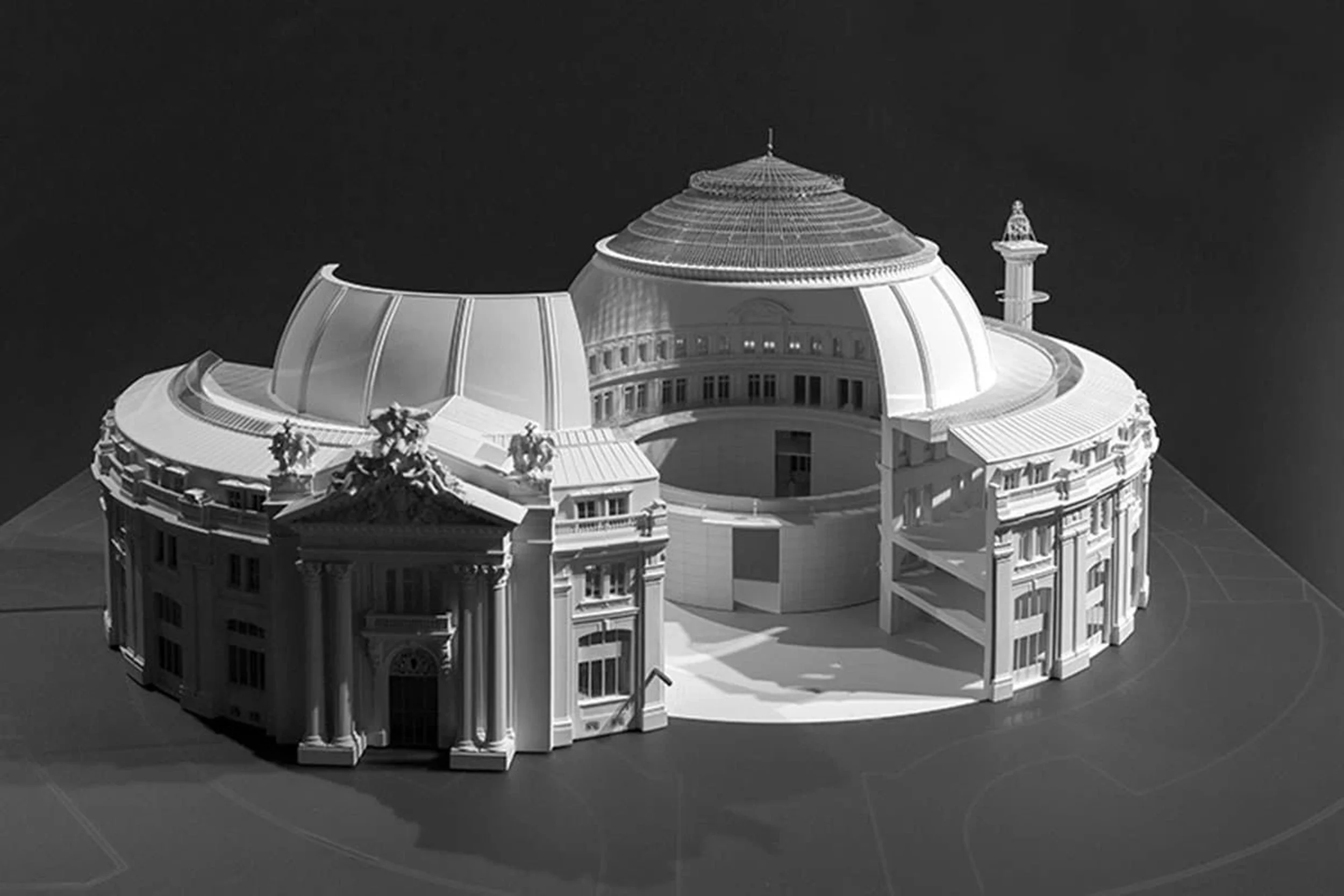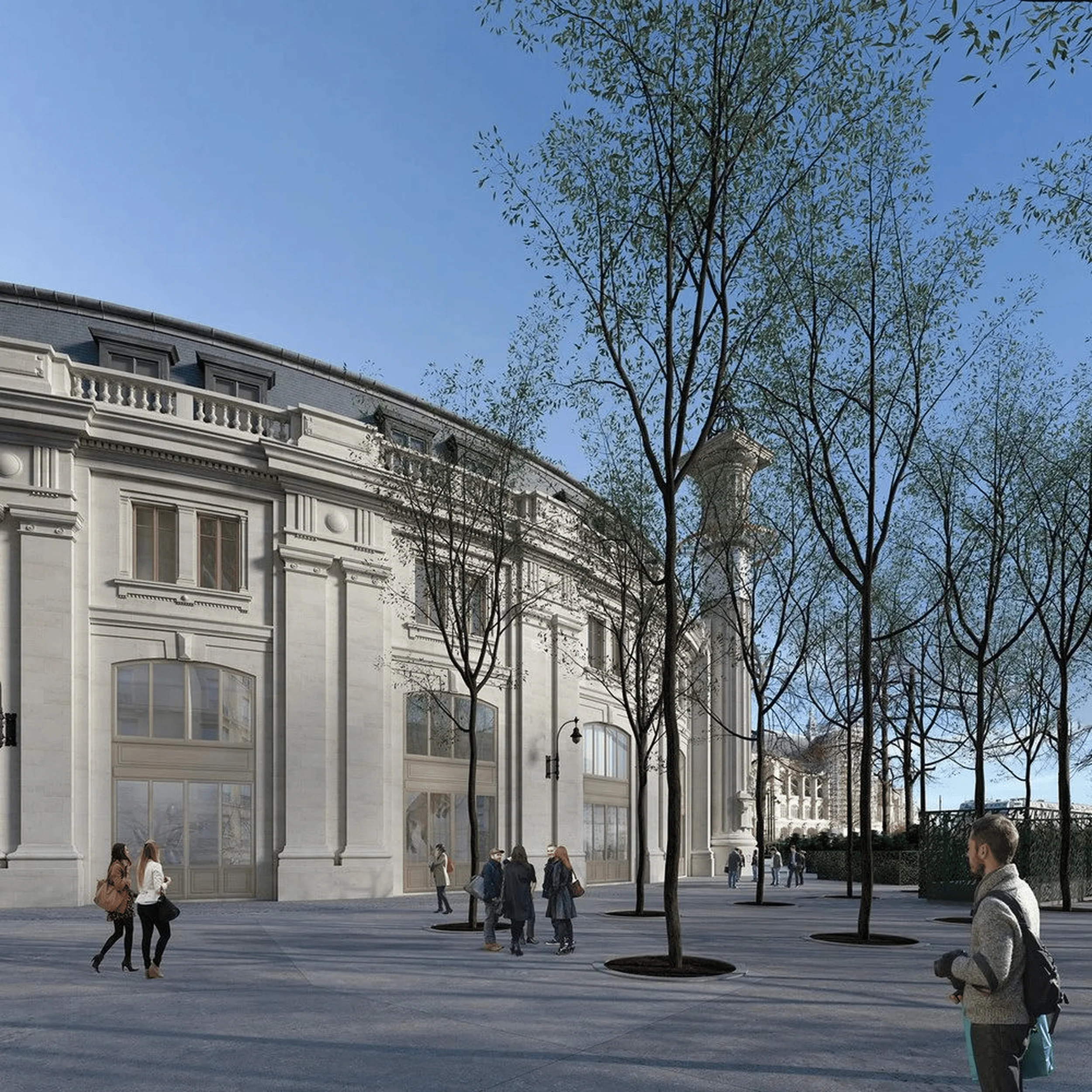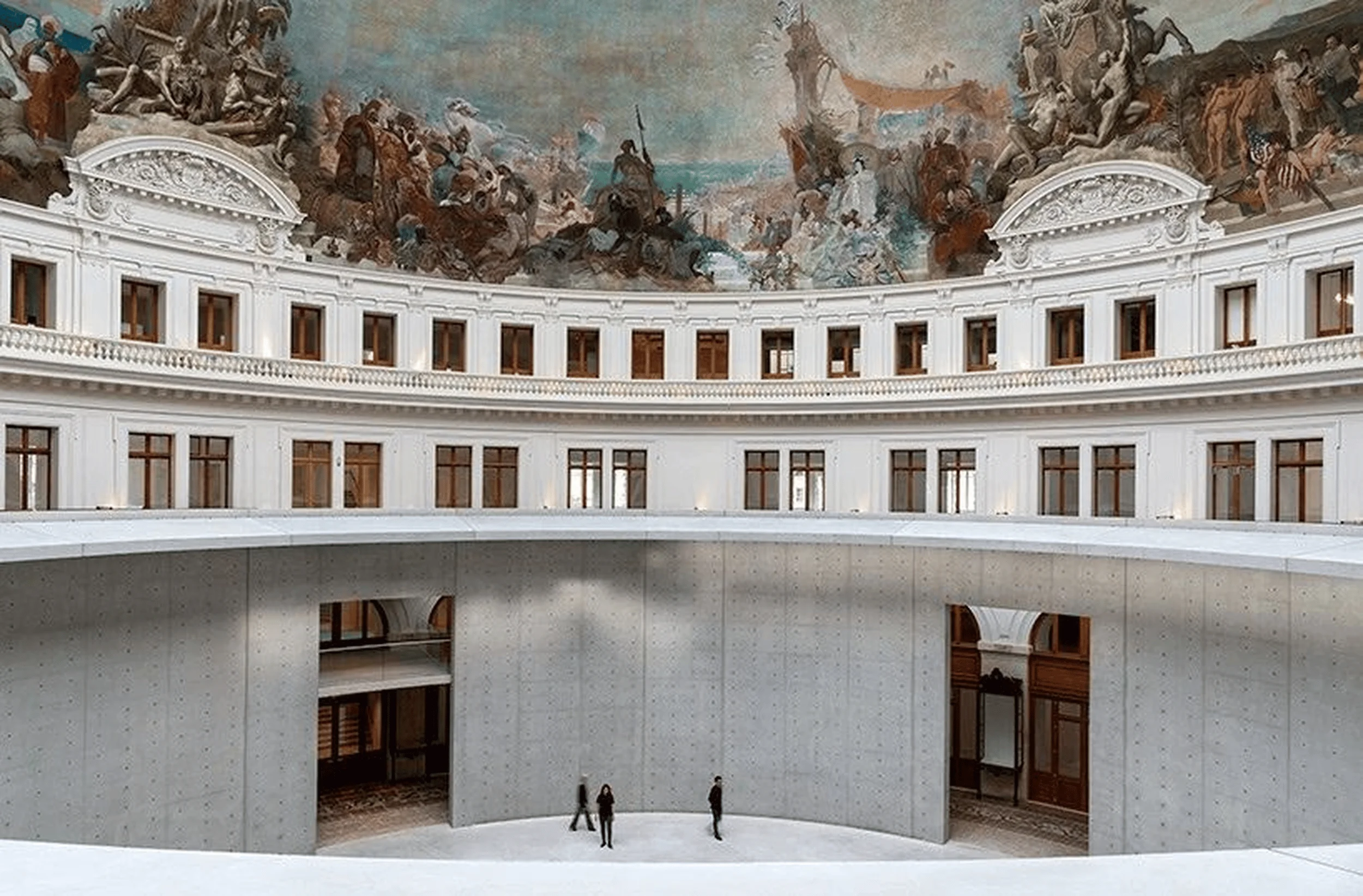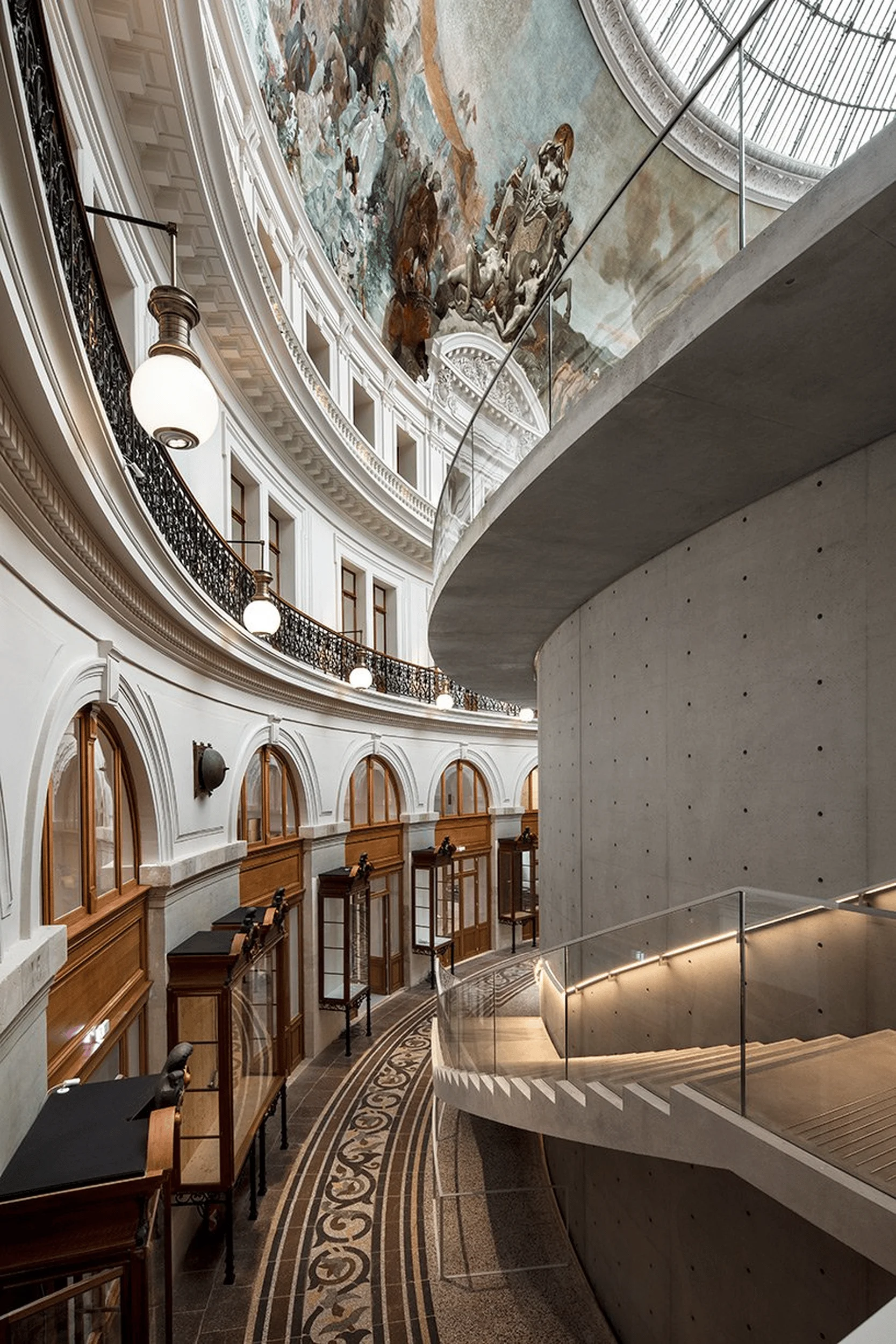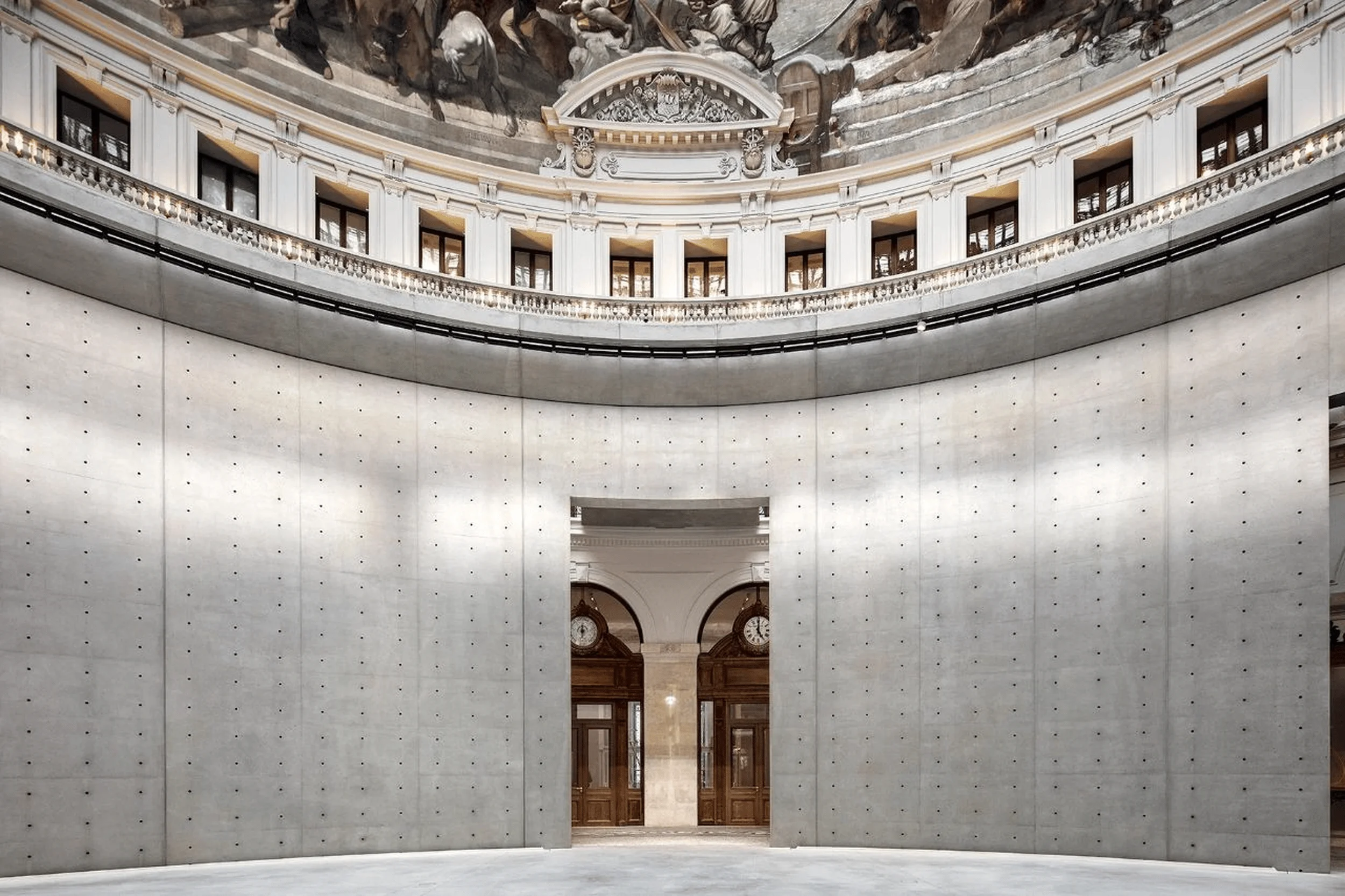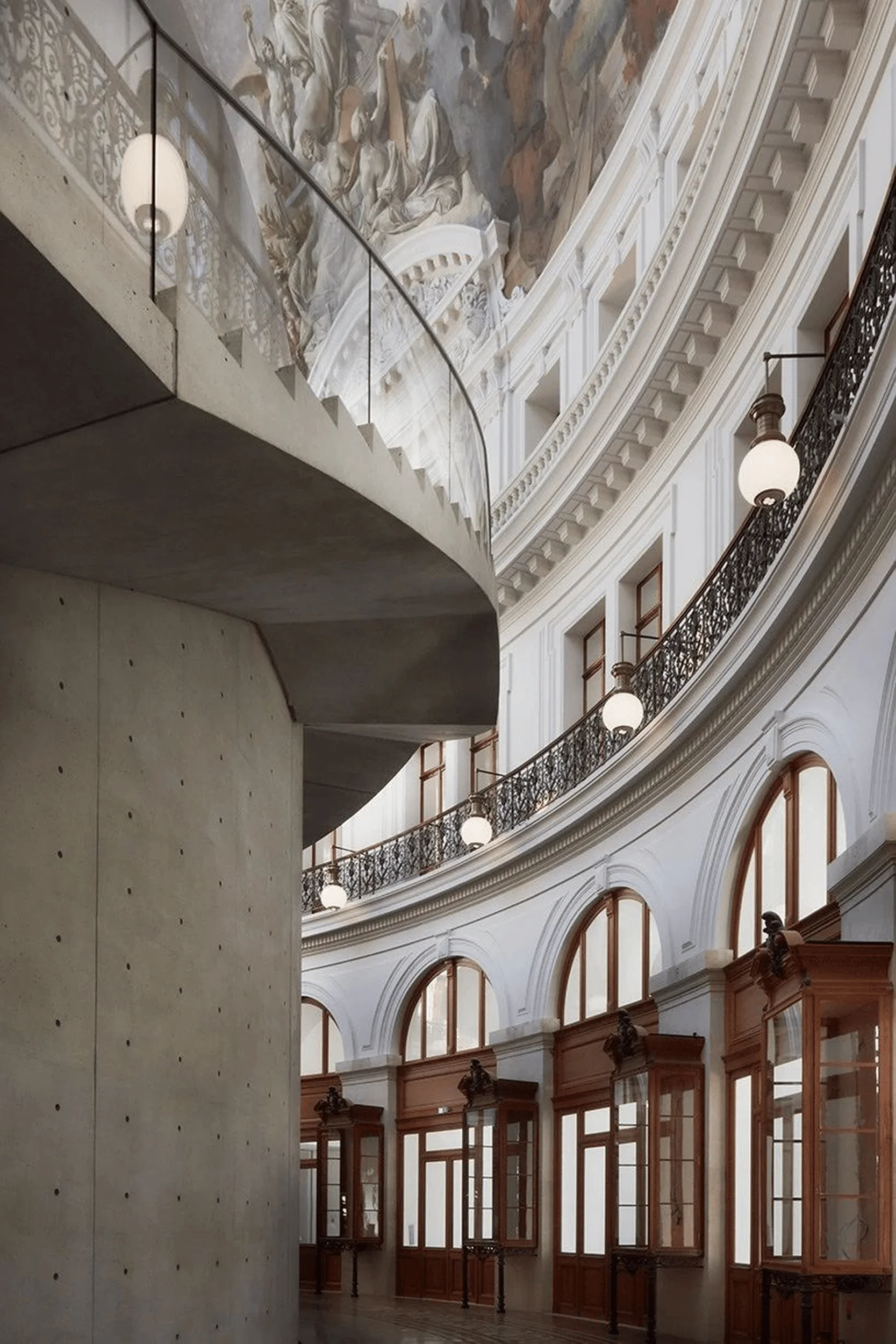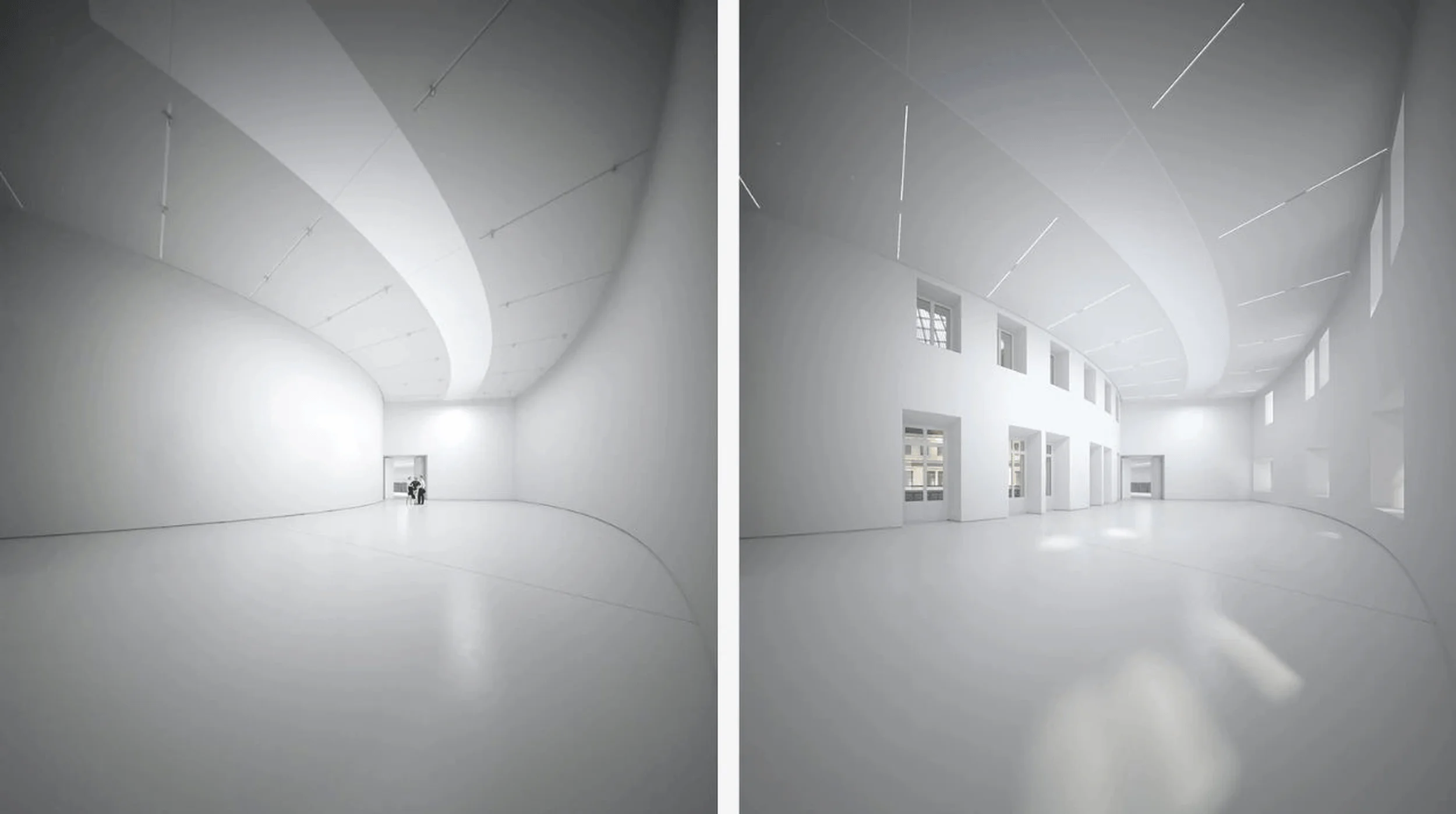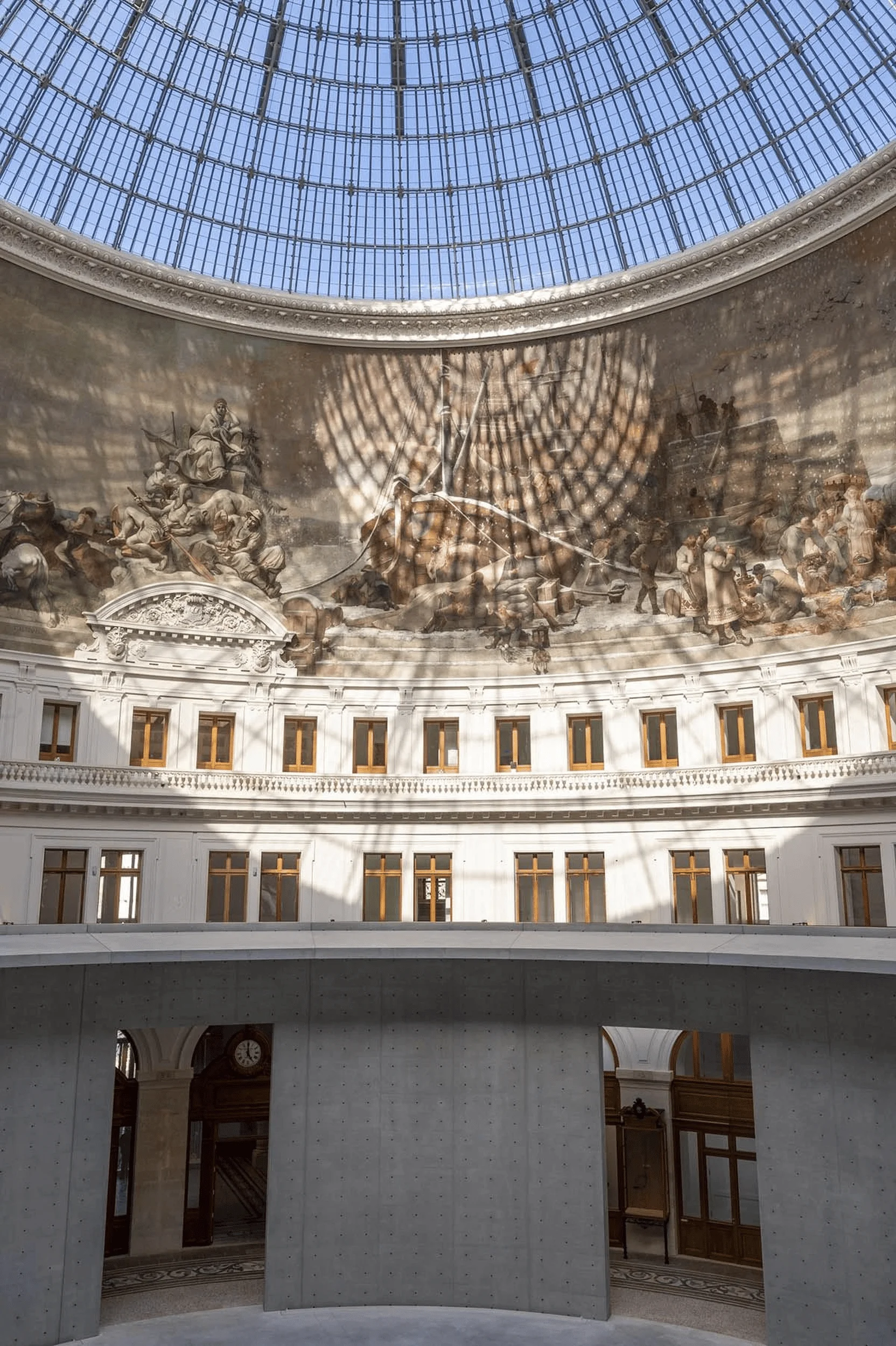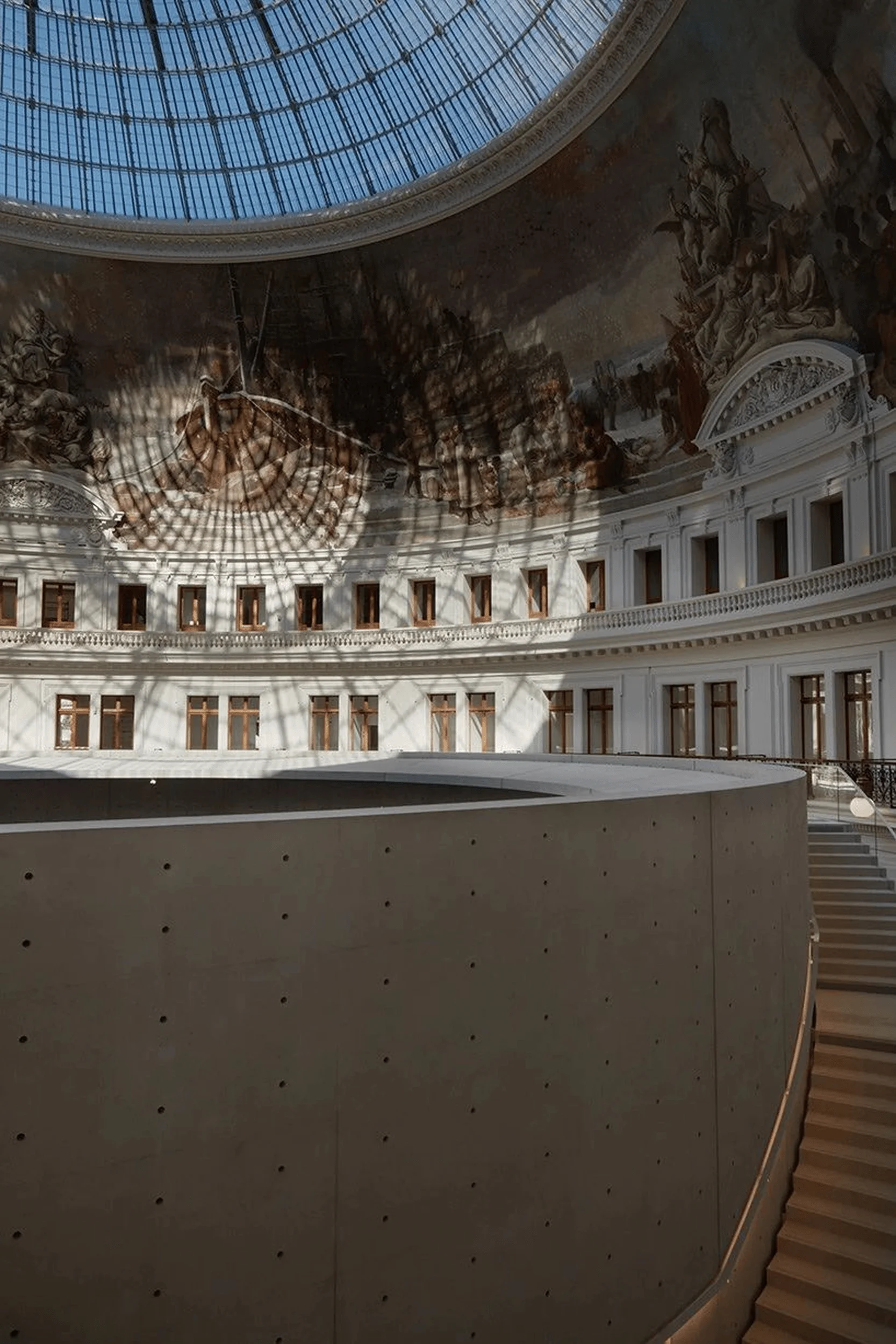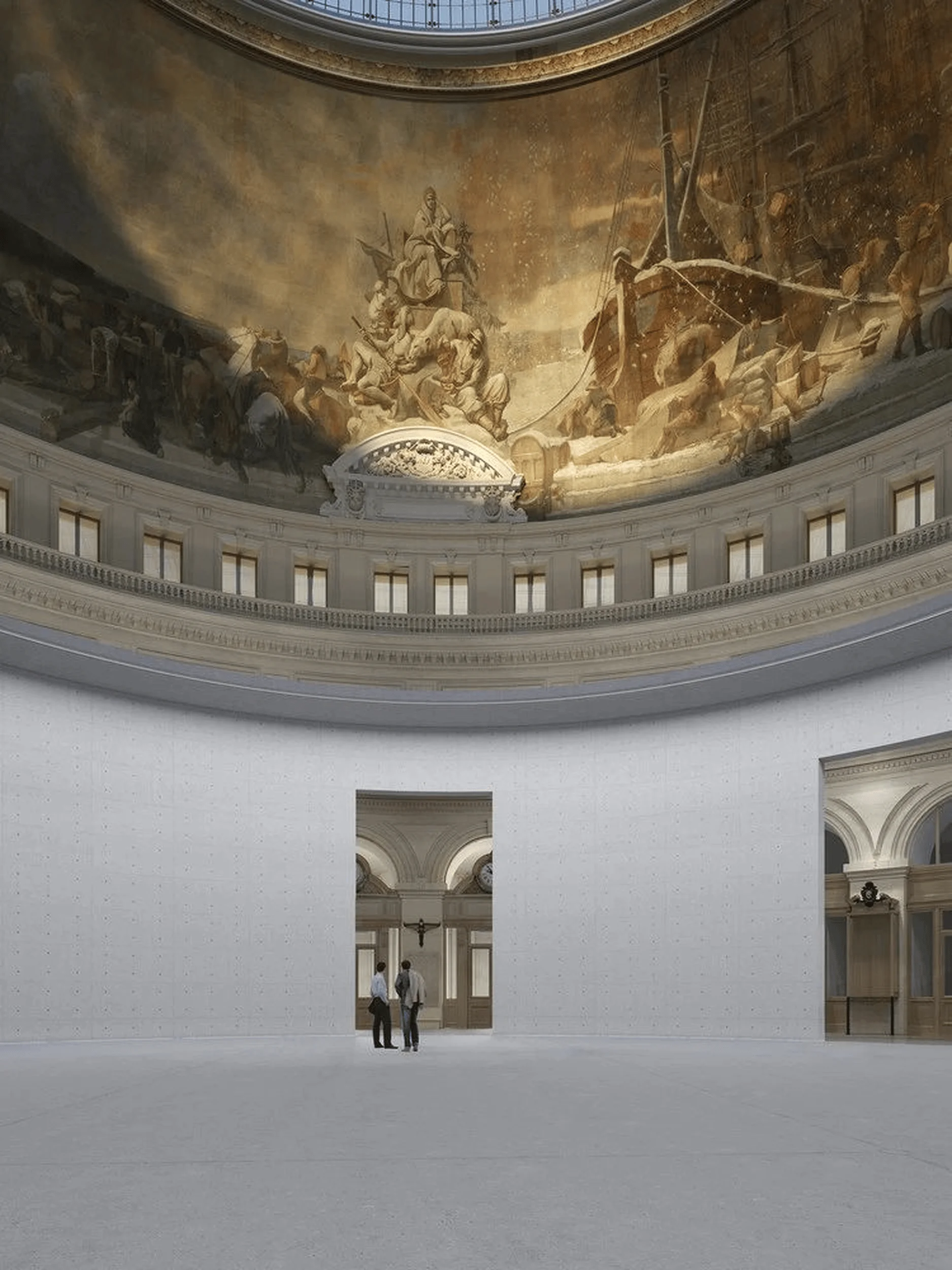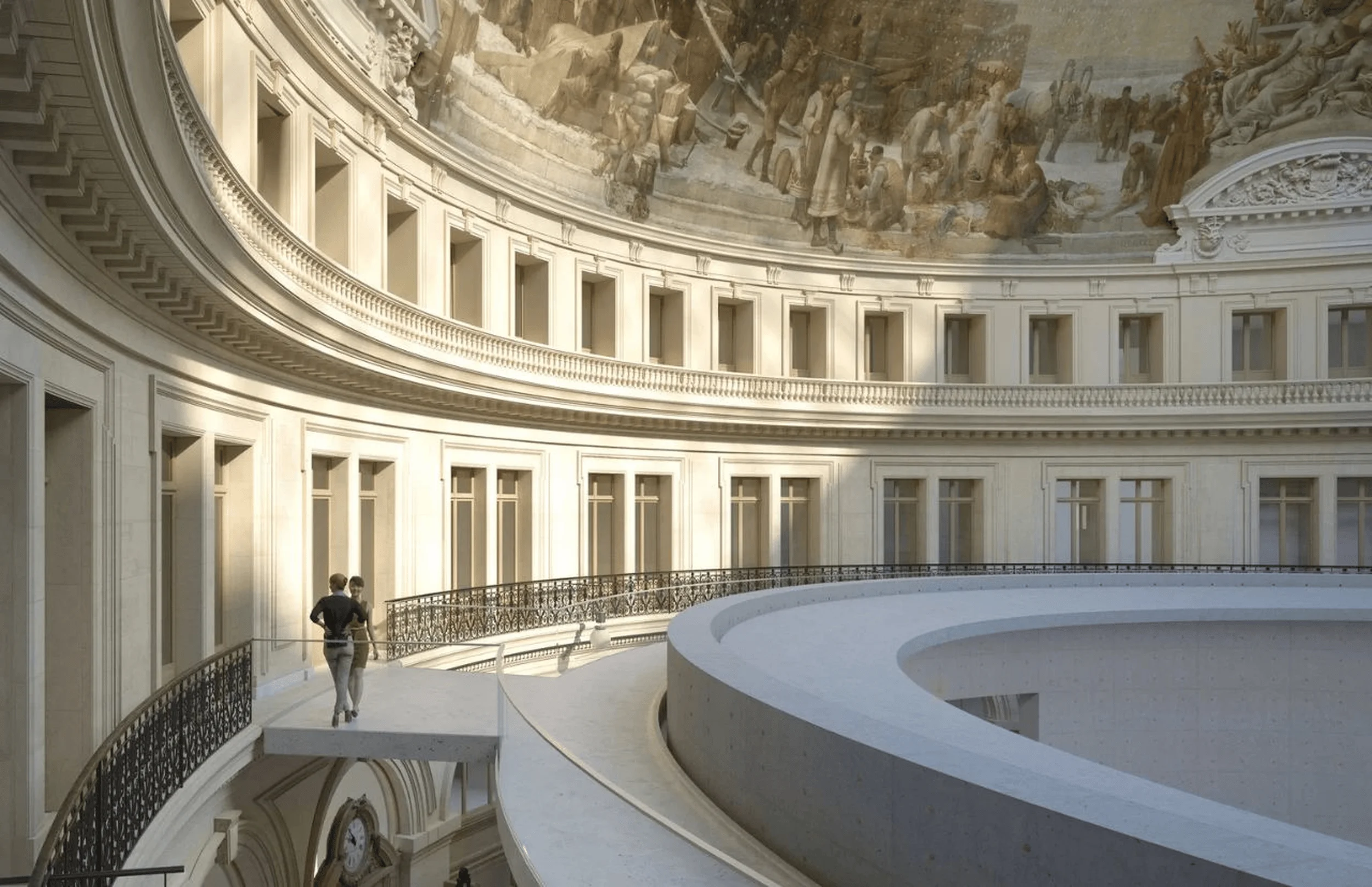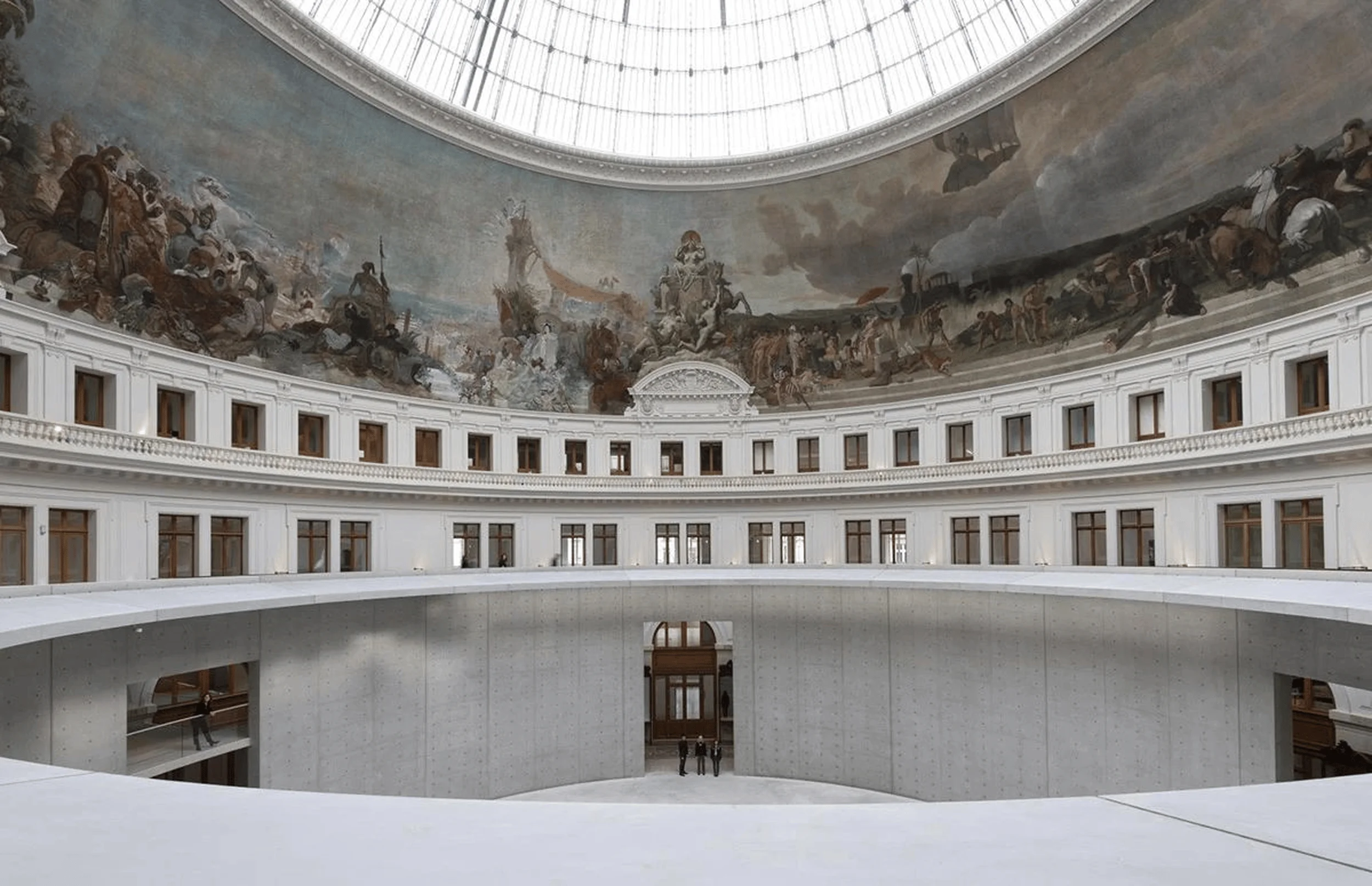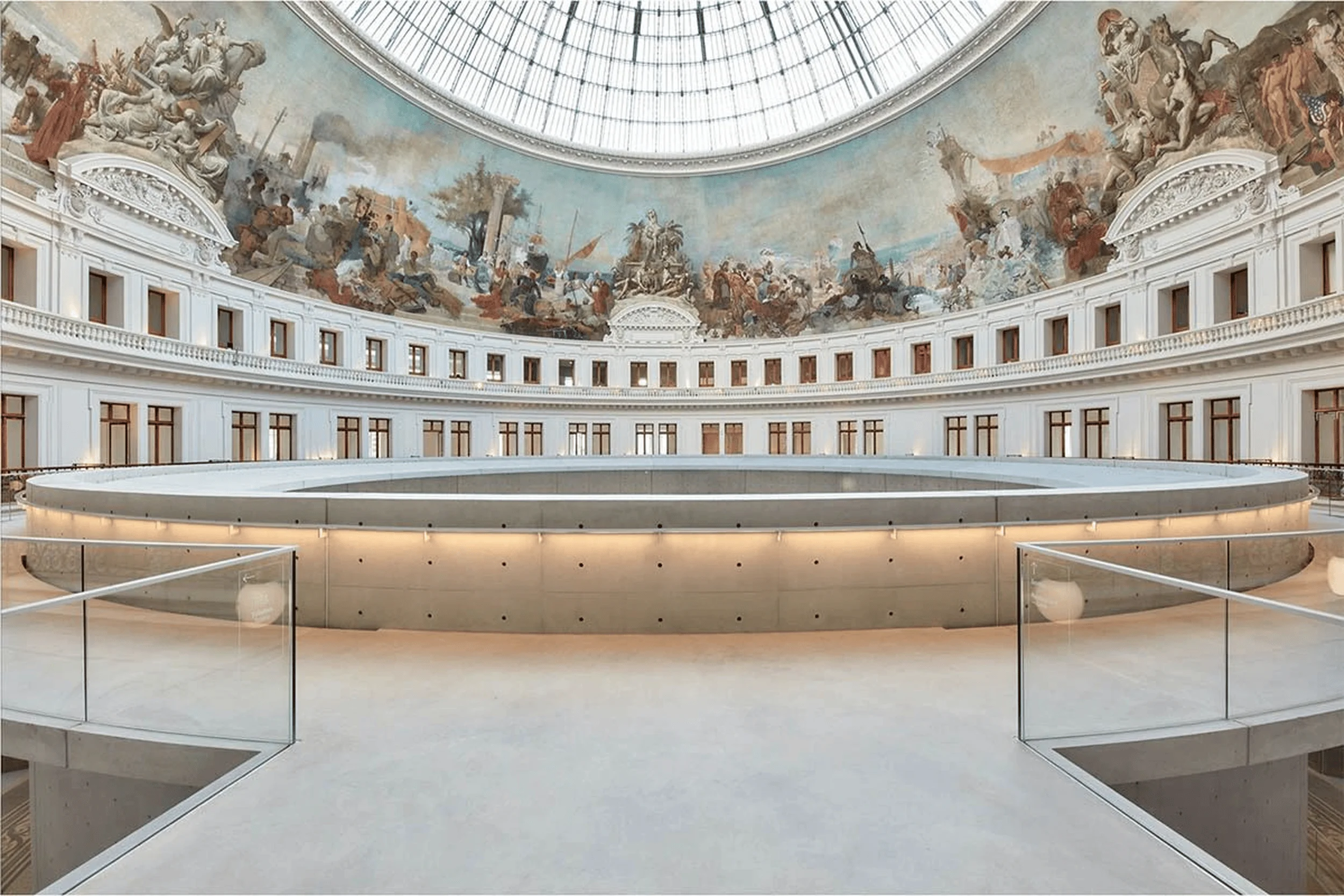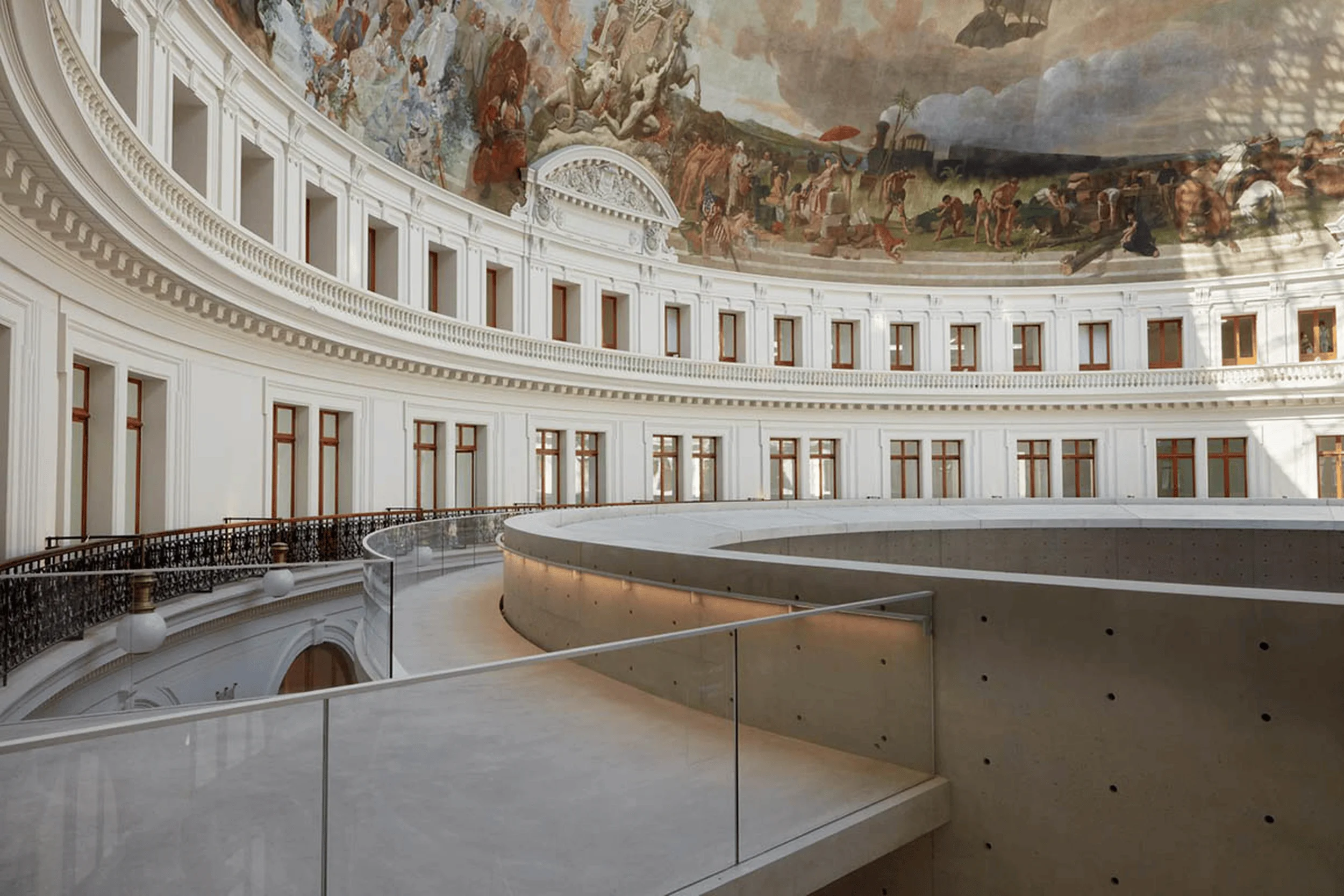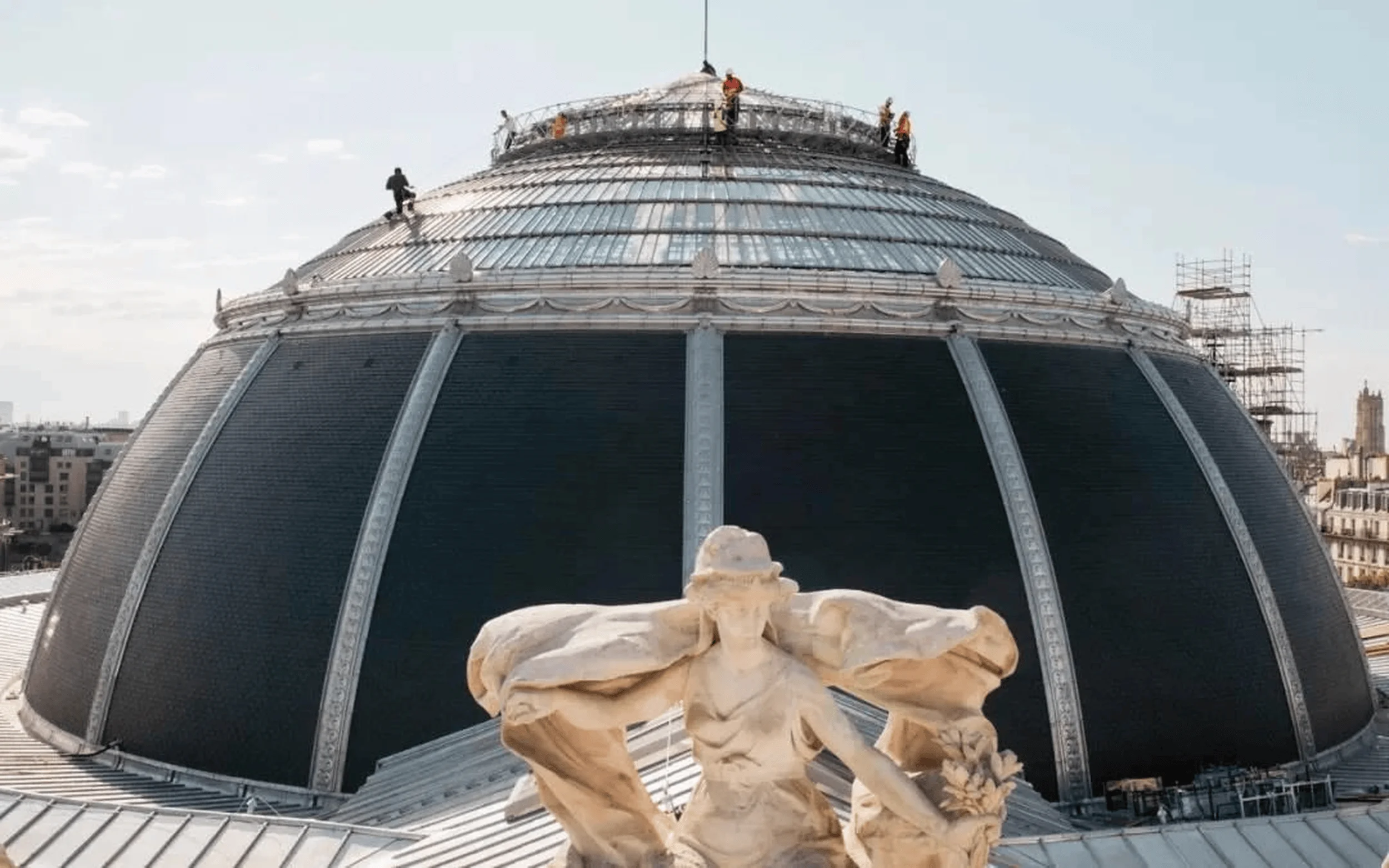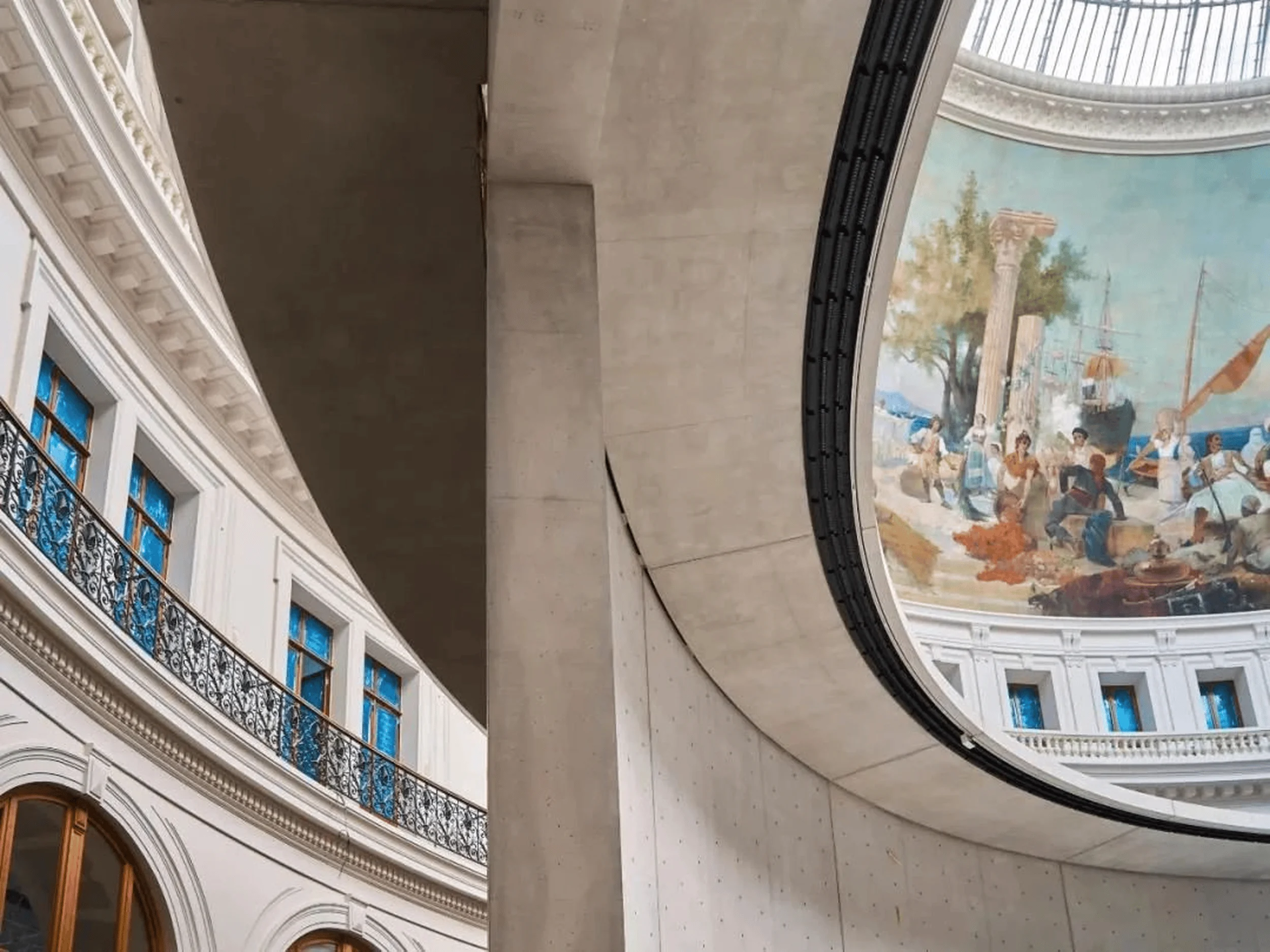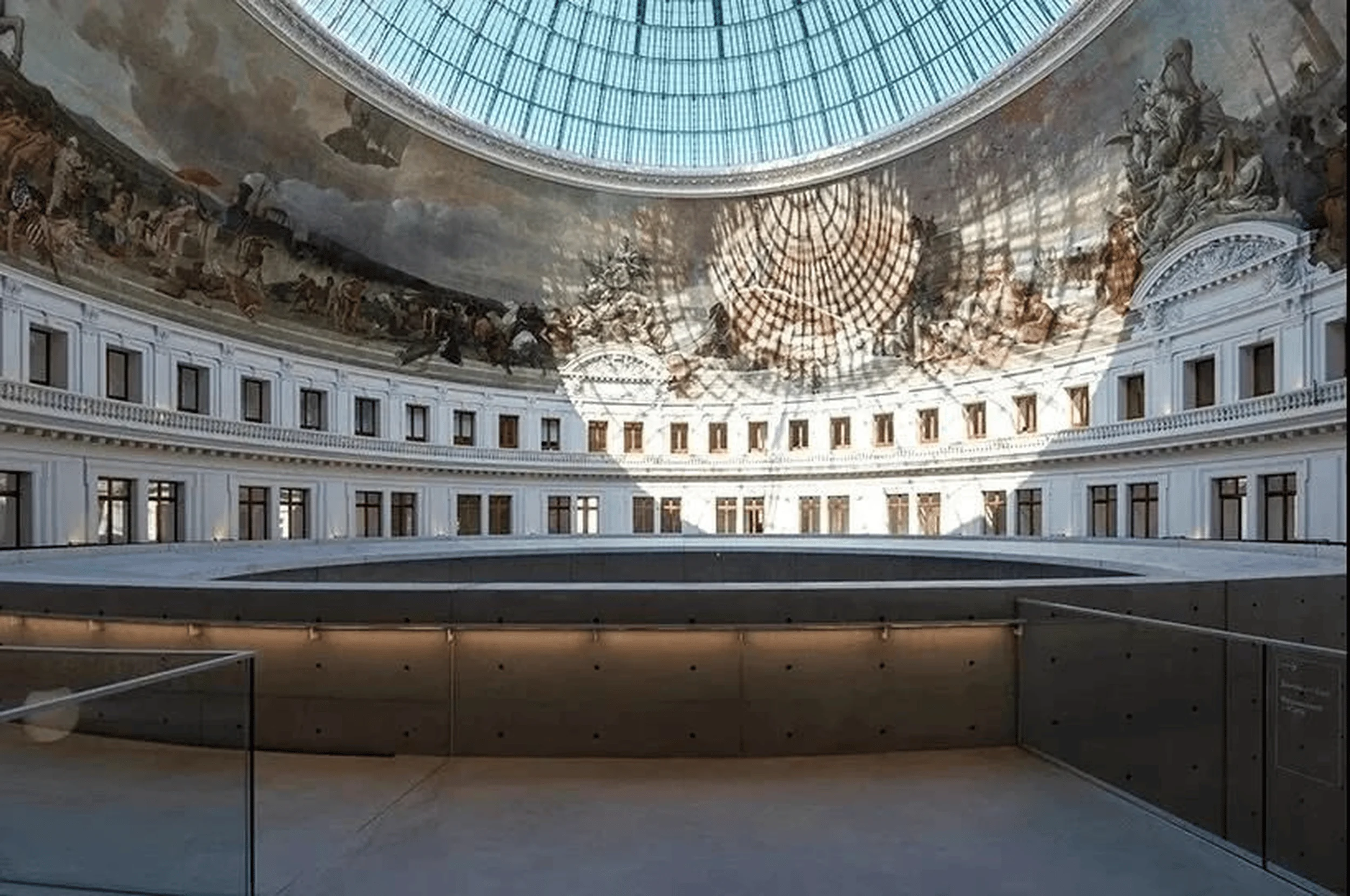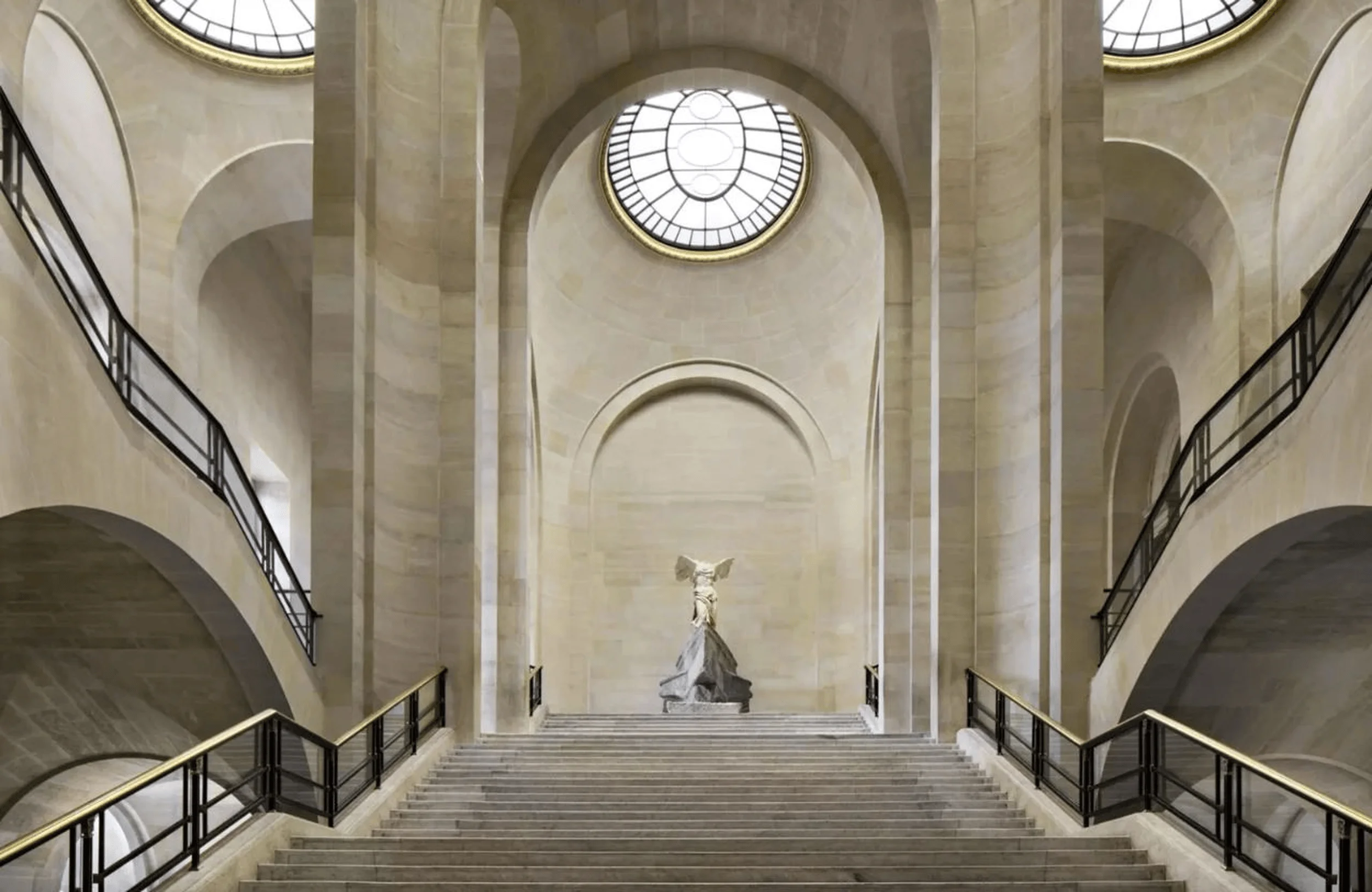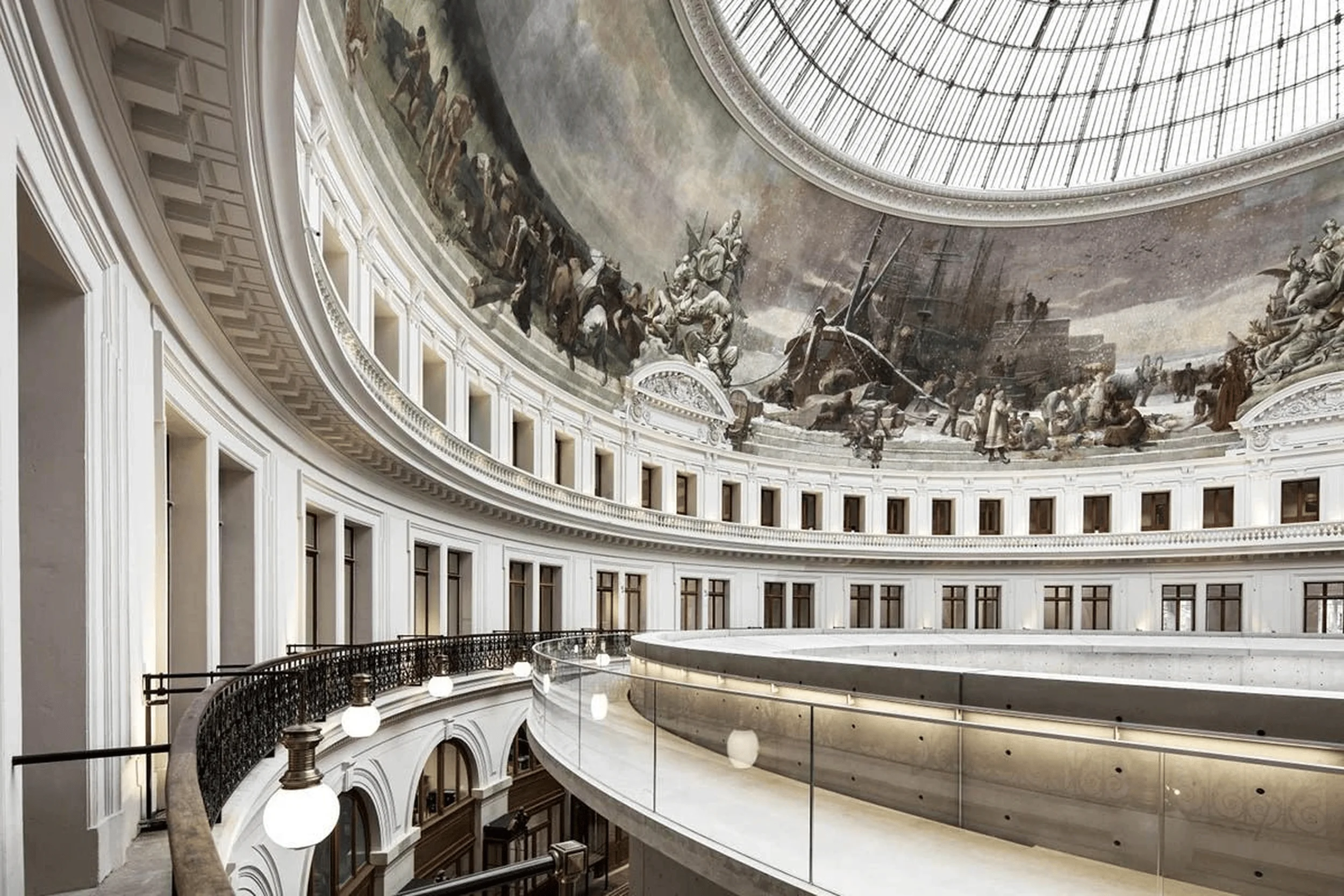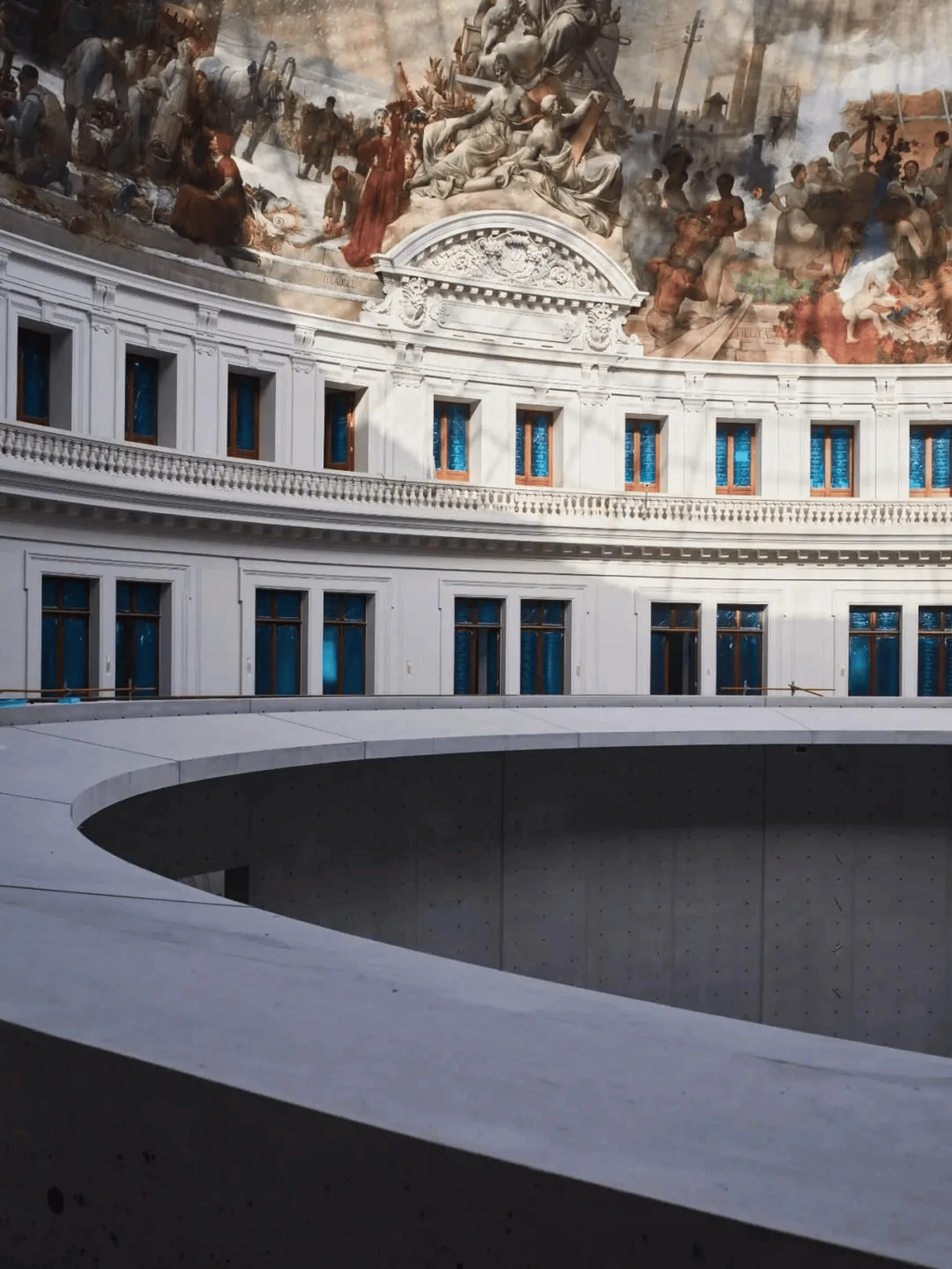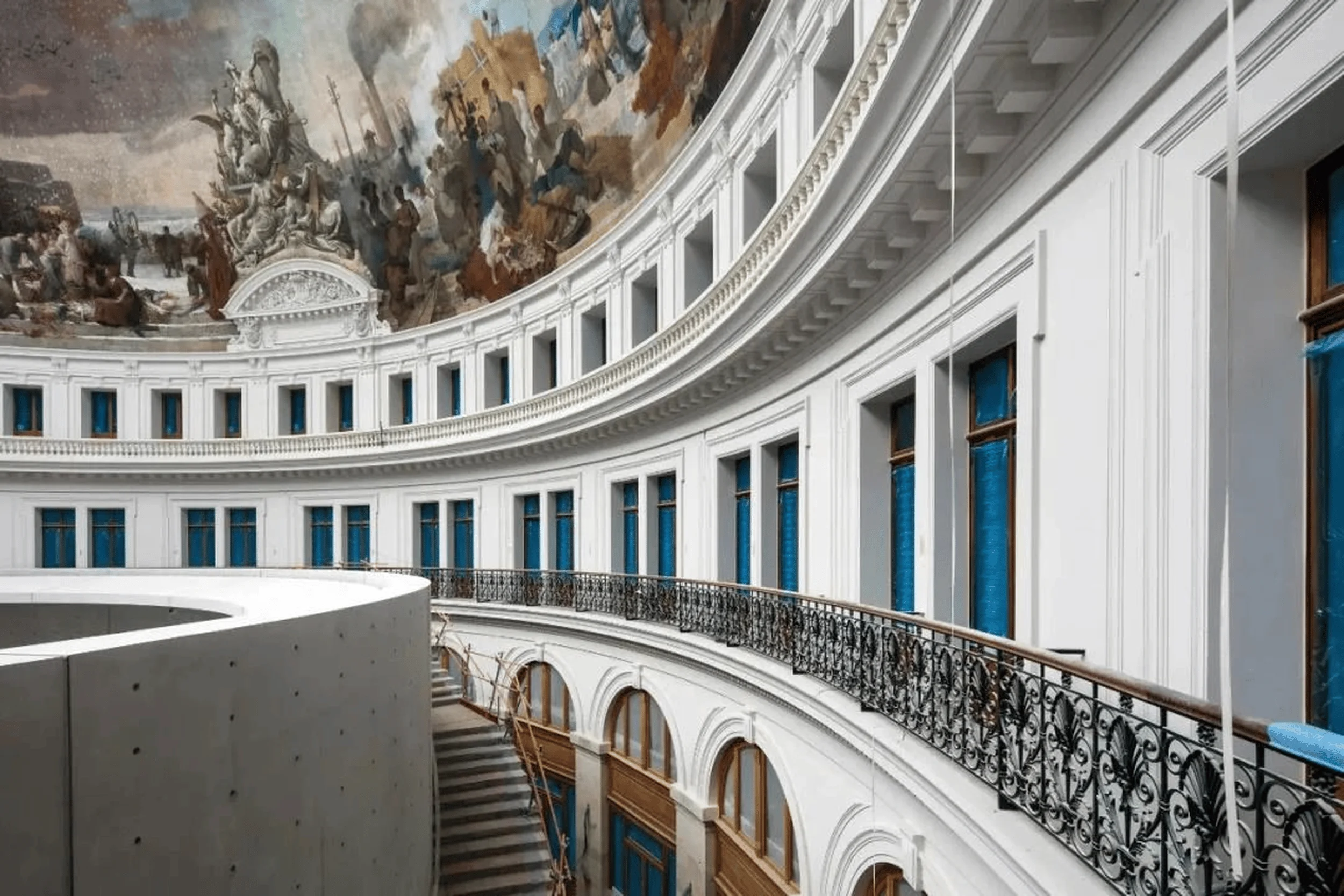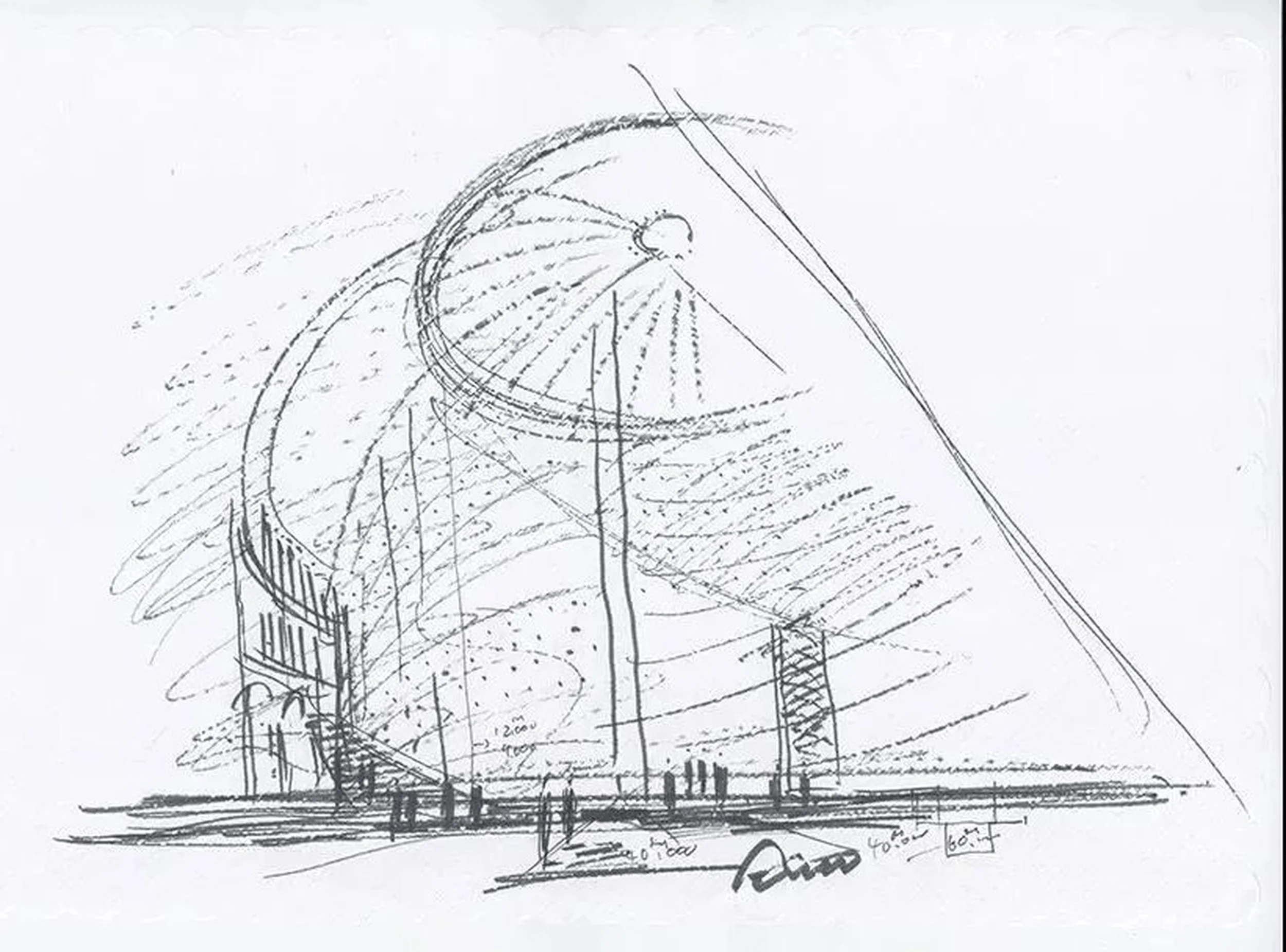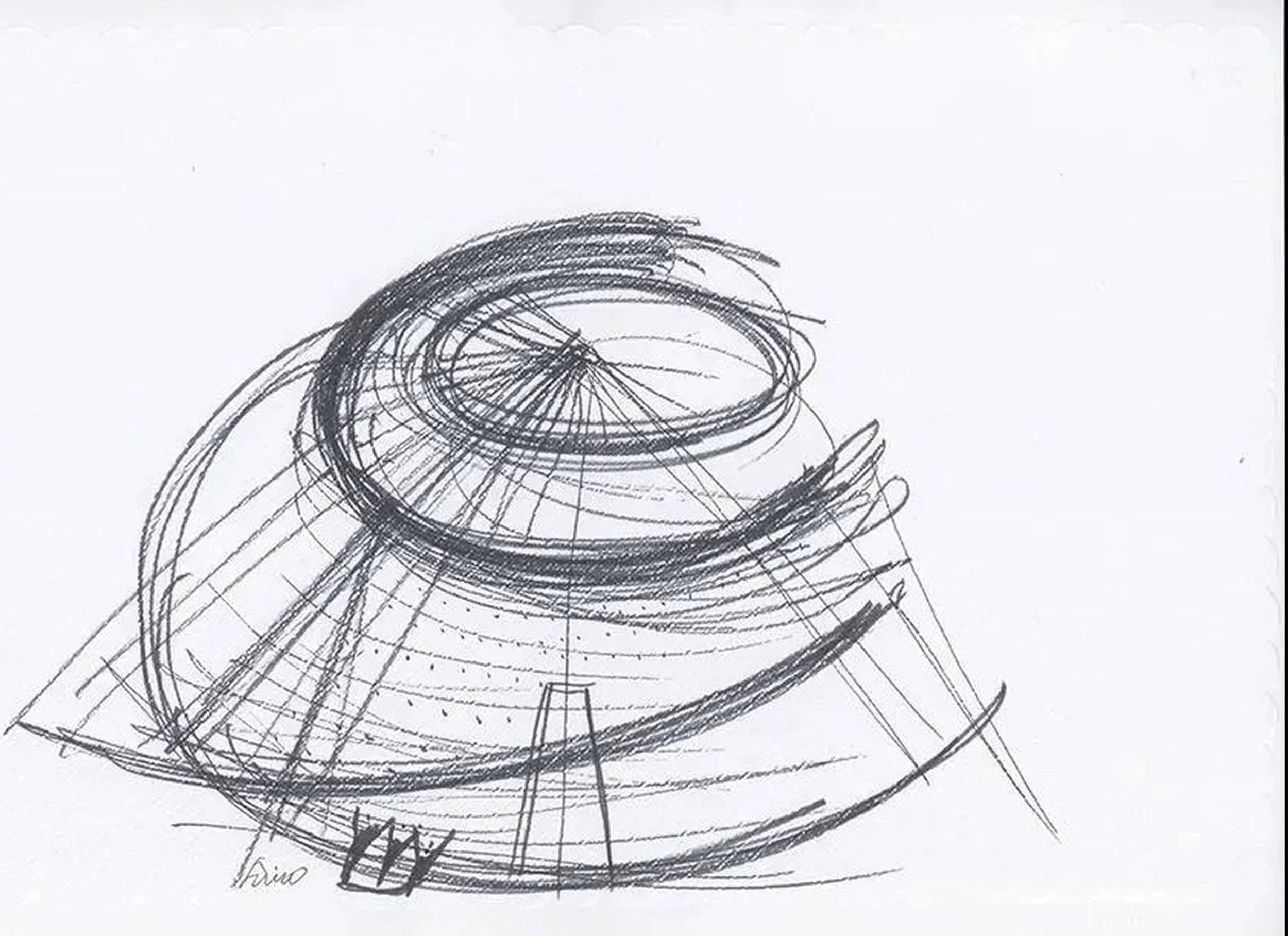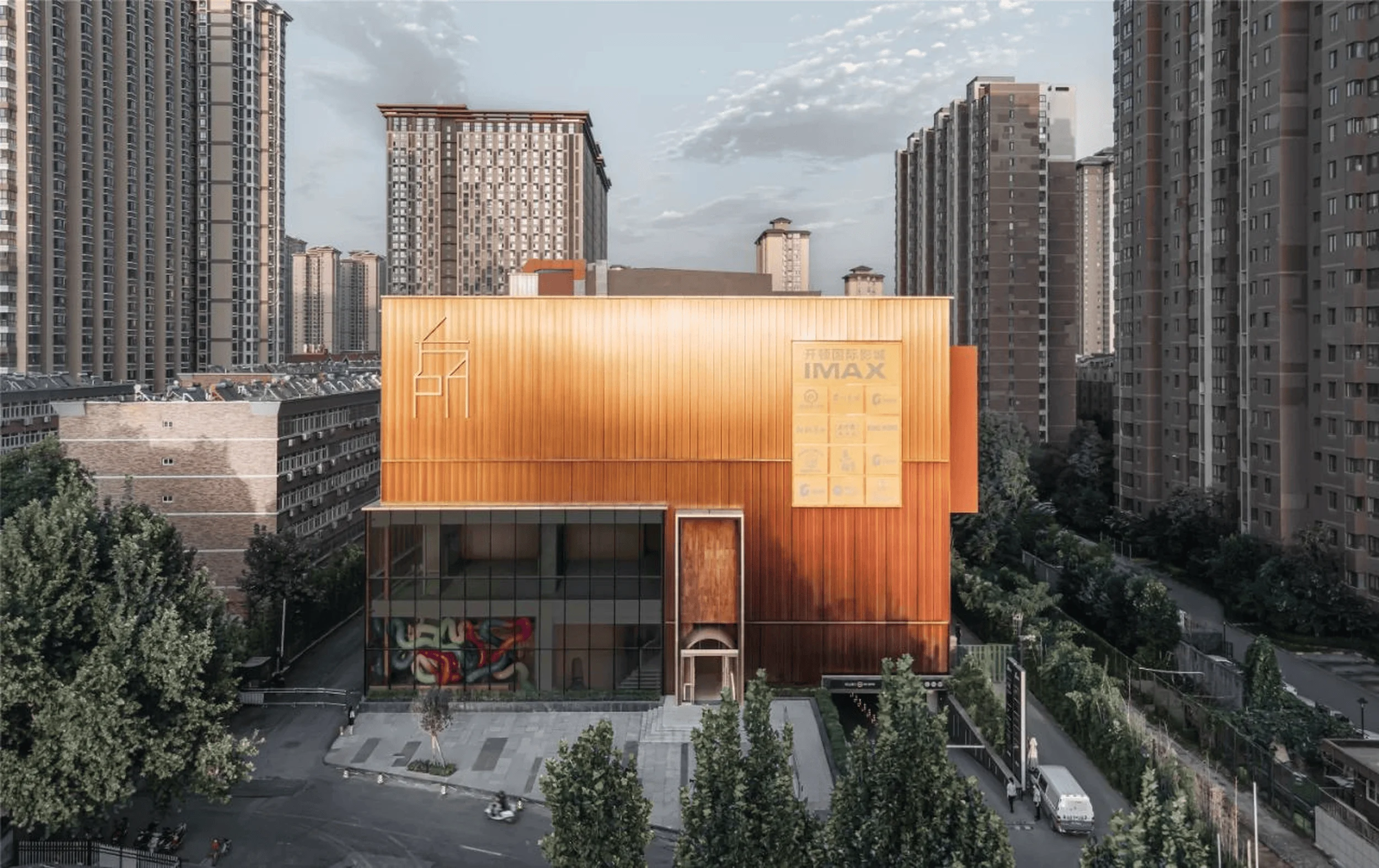Experience Tadao Ando’s architectural marvel, the Pinault Collection, showcasing 3000+ artworks in a revitalized Parisian landmark. A modern museum masterpiece.
Contents
Project Background: A Historical Transformation
The Pinault Collection, housed within the Bourse de Commerce in Paris, represents a remarkable fusion of history and contemporary design. Commissioned by billionaire François Pinault and masterminded by renowned architect Tadao Ando, this museum is a breathtaking renovation of a historical building. Originally an 18th-century corn exchange, the building’s neoclassical style stands in contrast to the prevalent Parisian Baroque architecture of its time. This significant project, a symbol of architectural preservation and adaptive reuse, showcases Pinault’s extensive collection of nearly 3,000 artworks. The Pinault Collection, a shining example of modern museum design, successfully marries the old and the new, creating a unique experience for art lovers worldwide. This Parisian museum design exemplifies innovative museum architecture.
Design Concept and Goals: Preserving History, Embracing Modernity
The design vision for the Pinault Collection centered on respecting the building’s historical integrity while introducing a contemporary artistic space. Tadao Ando’s minimalist approach is evident throughout. He aimed to create a harmonious dialogue between the existing structure and the new interventions, showcasing both the building’s past and its present-day purpose. The project’s primary goal was to provide an immersive and engaging experience for visitors, allowing them to seamlessly navigate through different levels and spaces. This exceptional modern museum design offers visitors a unique chance to understand the design evolution of museum architecture.
Functional Layout and Spatial Planning: A Seamless Flow Through Time
The approximately 3,000-square-meter museum unfolds across three levels, beginning with a welcoming reception area on the lower ground floor. Visitors then ascend to the first-floor galleries and the second-floor exhibition spaces, culminating in breathtaking panoramic views of Paris. Ando’s design cleverly integrates the original building structure, such as the grand cupola with its historical frescoes, into the new layout. The central element is a striking, 9-meter-high, 30-meter-diameter cylindrical concrete structure that houses essential services and circulation paths. This central cylinder is surrounded by walkways, allowing visitors to experience the space organically while enjoying the panoramic views.
Exterior Design and Aesthetics: A Modern Interpretation of a Classic
The exterior of the Bourse de Commerce retains its historical grandeur, reflecting the building’s rich past. However, Ando’s interventions subtly enhance its presence. The carefully restored facade, with its stately columns and classical elements, now presents a seamless blend of the past and present. The exterior maintains the original character of the building while introducing modern touches. This unique blend reflects the overall architectural approach of the project, where the old and the new elegantly co-exist, creating a space that is both timeless and contemporary. This innovative approach of museum architecture makes this building a landmark of innovative museum design.
Technical Details and Sustainability: Concrete, Light, and Harmony
Ando’s signature use of exposed concrete is prominent throughout the museum. The cylindrical structure and surrounding ramps are constructed from this material. This approach creates a stark contrast with the existing structure, highlighting the architectural dialogue between old and new. The innovative use of light, filtering through the glass cupola and illuminating the frescoes and artworks, plays a crucial role in enhancing the visitor experience. Sustainable practices were likely integrated into the renovation, though specific details were not highlighted in the article. This modern museum’s architectural design demonstrates a keen understanding of the interplay between materials, light, and space.
Social and Cultural Impact: A Revitalized Parisian Landmark
The Pinault Collection’s opening in January 2021 marked a significant cultural event in Paris. The museum adds another world-class art destination to the city’s already impressive cultural landscape. Its close proximity to the Louvre Museum and the Palais Royal further enhances its importance as a focal point for art enthusiasts. This Parisian museum adds to the vibrancy of the city and its artistic legacy. This modern museum is a key example of modern museum design, demonstrating an innovative approach to integrating art, architecture, and social impact.
Economic Considerations: A Significant Investment in Parisian Culture
The project involved a substantial investment of €800 million, funded by François Pinault. This reflects the project’s scale and ambition, demonstrating Pinault’s commitment to both architectural preservation and the cultural enrichment of Paris. The museum’s economic contribution also extends to job creation and tourism revenue for the city. The creation of this exceptional modern museum signifies a bold commitment to economic and cultural revitalization.
Construction Process and Management: A Collaborative Effort
The project’s complexity involved collaboration between various specialists in heritage preservation, modern construction, and art handling. This unique collaboration successfully merged historical preservation methods with contemporary building techniques, resulting in a refined museum space that beautifully harmonizes the old and the new. This process reflects the commitment to maintaining the historic integrity of the building whilst introducing modern architectural design concepts.
Post-Completion Evaluation and Feedback: A Cultural Hotspot
The Pinault Collection at the Bourse de Commerce has already become a celebrated landmark. It serves as a testament to successful architectural preservation and modern design. Early reviews praise its immersive atmosphere and the interplay between the historical building and the contemporary interventions. This modern museum showcases a successful integration of art and architecture creating a unique and positive impact on the Parisian cultural scene.
Conclusion: A Landmark of Modern Museum Design
The Pinault Collection at the Bourse de Commerce represents a significant achievement in modern museum design, seamlessly blending historical architecture with contemporary artistic expression. Tadao Ando’s minimalist vision, coupled with François Pinault’s vision, has transformed a historical landmark into a vibrant, accessible, and inspiring cultural destination. This modern museum’s design and function are a testament to the transformative power of architectural innovation. The project underscores the enduring value of thoughtful architectural intervention and the potential for enriching cultural landscapes with bold, insightful, and historically sensitive museum design.
Project Information:
Project Type: Museum
Architect: Tadao Ando Architect & Associates
Area: 3000 sqm
Year: 2021
Country: France
Main Materials: Concrete
Photographer: Information not provided



